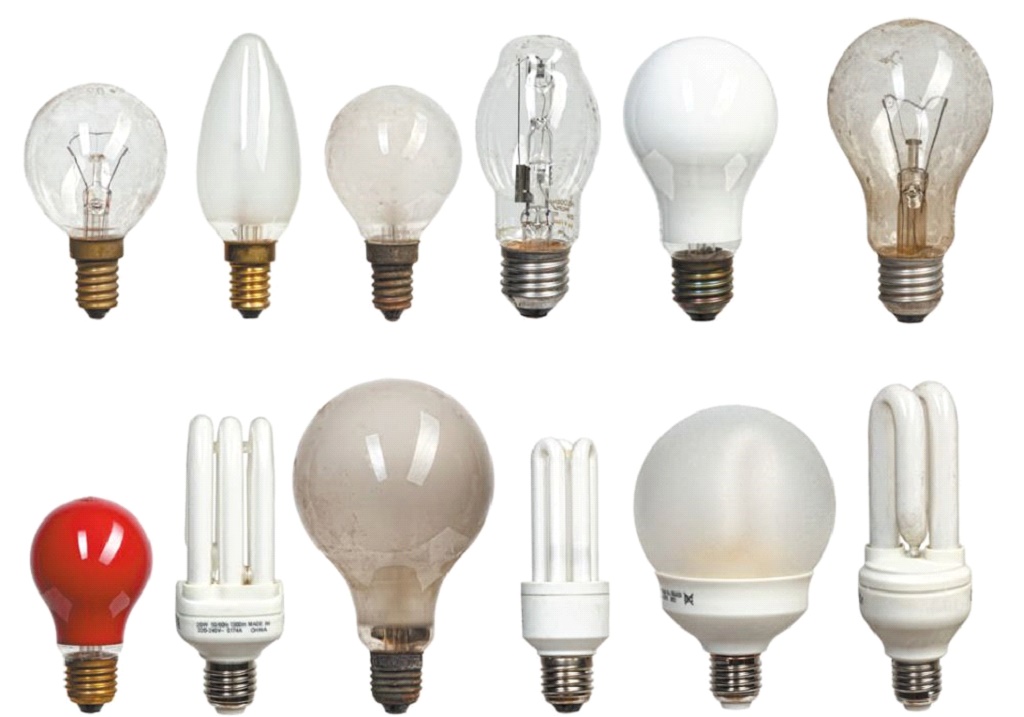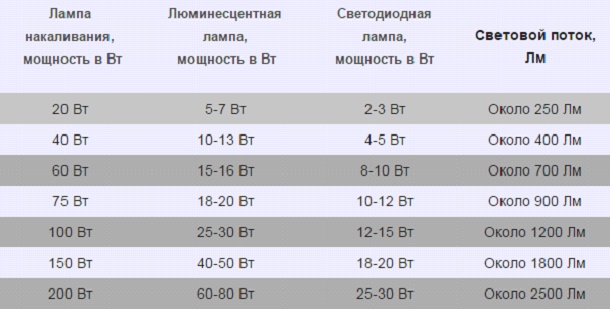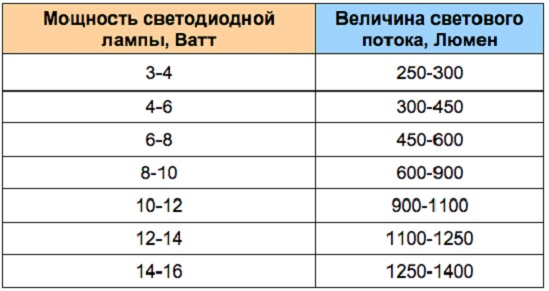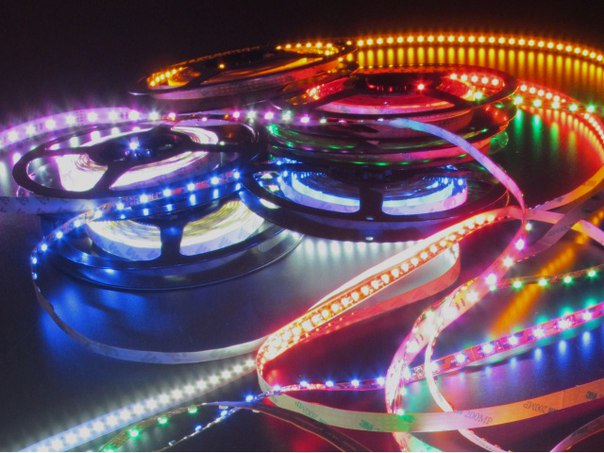Creating favorable conditions in the house for a normal rest requires taking into account all possible parameters and nuances. Particular attention must be paid to the level of illumination. After all, it is on this parameter that the general health of a person, his emotional and psychological comfort depends.
Therefore, it is very important to calculate how many lumens in lighting are needed per square meter? You will learn about this and about what level of illumination you need to create from our article.
Important parameter
Illumination is a very important indicator, without which a comfortable stay in any room of the house is impossible. Each room in the house has its own light standards. Therefore, various kinds of calculations that relate to this norm are a necessity.
In this situation, you need to make the following calculations:
- number of lamps per square meter;
- the number of lighting fixtures per square meter;
- how many lumens are needed to illuminate a room per square meter.
In this article, we will focus on the last calculation.
What you need to know
When determining how many bulbs or lighting fixtures are needed, the first step is always to calculate the number of lumens per square meter for a particular room.
In this case, you need to know what illumination levels are set for each specific residential or non-residential premises. All these norms are given in special documentation - SNiP.
Norms for SNiP
You can create the desired level of illumination using various light sources:
- incandescent lamps;
- fluorescent and LED bulbs;
- halogen and metal halide lamps;
- LED strips;
- neon lamps, etc.
Each of the above light sources has different technical indicators of illumination. The most important parameter in assessing the level of illumination is the luminous flux emitted by the light source.
The power values of lighting devices indicated in the table are given for incandescent lamps, since these basic regulatory documents were developed even before the era of modern energy-saving technologies. Today, ordinary incandescent lamps are practically not found in the house. They were replaced by light-emitting diode (led), fluorescent and halogen light sources. At the same time, it is LED bulbs that are most popular, since they are very economical in terms of electricity consumption, have better technical indicators and a longer service life than other energy-saving light sources.
Luminous flux is measured in lumens. The value of the luminous flux can be found on the packaging of the light bulbs. At the same time, it is not always correct to pose the question of how many lumens are needed to illuminate one square meter. This is due to the fact that the luminous flux in this case reflects only the specific capabilities of a particular light source. In this case, taking into account the distance from the selected lighting object for the room is not taken into account. Therefore, it is rational to introduce such a parameter as lighting here. It is measured in suites.
Based on this, equality was established between suites and lumens. Thus, for one square meter of the room there is a luminous flux of one lumen and it is equal to one lux. This rule applies to all premises, both residential and non-residential.
Note! With distance from the light source, there is a proportional decrease in illumination per square of the distance.
Required volumes
After we figured out the concept of illumination and put an equal sign between lumens and lux, we can begin to determine the illumination rate for the average person. Physicians and psychologists worked on this issue, who developed the necessary indicators of the level of illumination for each room and room in the house. All of them are given in the SNiP table.
Note! All norms given in this documentation are recommended. In addition, they are minimal and for residential premises they can undergo certain changes in the established range. At the same time, the changes should be minimal, so as not to affect the human body in a negative way. This range is 10-50 lux.

Indicators for the apartment
The existing standards allow you to create a comfortable level of lighting. They are listed in suites, which can be specified in lumens if desired.
To calculate the number of lumens, you need to be guided by indicative methods. Using the parameters indicated in the table, you can roughly estimate the number of lumens that is needed to illuminate one square meter of a room with a ceiling height of about three meters.
Calculations for different lamps
The calculation of the number of lumens required to illuminate one square meter of space, depending on what standards exist for a particular room, directly depends on the choice of a light source.
Determining the type and number of light sources is the most important task for any apartment owner. To assess the required level of illumination and other indicators (type of bulbs and their number), you need to evaluate the following parameters:
- room area;
- power of purchased bulbs;
- norms of SNiP.

Types of lamps
In a situation where you bought energy-saving light sources (fluorescent, LED, etc.), when calculating one square meter of room area, you must take into account the corresponding coefficients.
For fluorescent lamps, the number of watts per square meter should be reduced by about 3.5-4.5 times. But if LED lamps are used - 6-8 times at once. This situation has arisen due to the fact that modern energy-saving light bulbs have a much higher luminous efficiency compared to incandescent paws. As a result, with significantly less power consumption, such products will give a much brighter light. Therefore, their number will need to be reduced in proportion to the increase in the level of light output.

Power table
In addition, it must be remembered that in this situation it is also necessary to evaluate the height of the ceilings. Today people live both in new buildings and in old Khrushchev buildings. And the height of the ceilings is different. With ceilings of three meters, the number of watts and lumens will need to be increased by at least 1.5.
Important points
To make a professional calculation of the illumination level and the number of required lumens, the following points must be taken into account:
- lamp type;
- the height at which the lighting fixture will be placed;
- type of lamp;
- its location in the room relative to the vertical plane. Here the efficiency of the lighting device should be evaluated;
- reflective characteristics of the material used for interior decoration of the premises: walls, floor and ceiling.
When determining the reflectivity of walls, ceilings and floors, it must be remembered that the brighter the room is, the higher the amount of light reflection will be:
- if the ceiling and walls are made in light colors, then the coefficient of light reflectance will be approximately 0.7;
- when decorating a room with light, beige and light gray facade paints, this coefficient will be approximately 0.5-0.6;
- for dark colors - 0.3;
- when decorating a room with black granite or marble, the reflectance will be approximately 0.1.
To calculate the optical characteristics of a room, use the efficiency parameter and special unified tables.
Note! In the absence of the desire or ability to independently produce lumens to determine the level of illumination, you can use the services of specialized offices.
They will be able to quickly make the necessary calculations, eliminating possible errors or errors.
We carry out calculations
To determine the illumination for a surface (in lux), as well as the luminous flux (in lumens), several calculation steps should be performed:
- calculation of the total value of the luminous flux indicator required in a particular room;
- then, based on the numbers obtained, you need to determine the required number of light sources, depending on their power.
In order to determine the luminous flux indicator (in lumens), you should use a special formula - "luminous flux = X * Y * Z", where:
- X is the norm established for the illumination of a particular room / object. To do this, follow the SNiP table given in our article the very first;
- Y - area of a specific room (indicated in square meters);
- Z is a correction factor that is entered depending on the height of the ceilings in the room for which the calculations are carried out. If the ceiling height will be from 2.5 to 2.7 meters, then the coefficient is taken as equal to one. If there are ceilings from 2.7 to 3 meters, the coefficient = 1.2. If you are the proud owner of ceilings from 3 to 3.5 meters, then the coefficient = 1.5. Rarely, but ceilings can be from 3.5 to 4.5 meters. In such a situation, the coefficient will be equal to 2.

Ceiling height is important
Substituting all the values in the formula, you get the number of lumens that you need per square meter of a particular room.
After that, you need to complete the calculations by determining the number of bulbs and lamps that should be installed in the room in order to obtain a high-quality and comfortable level of illumination. To do this, you need to be guided by the table, which shows the indicators of the luminous flux power for the LED lamp. We settled on an LED light source, as it is today that it is most often used for indoor lighting.

Luminous flux power indicator table
The value that we got at the first stage must be divided by the luminous flux of the lamp used (taken from the table) and you will get the required number of LED lamps of this power for the room.
Good to know
If you get a non-integer value (for example, 3.75), it must be rounded up. A slight excess of the norm will be better than a lack of it.
Better lighting will be with the even placement of lighting fixtures around the entire perimeter of the ceiling. In such a situation, as well as with some special design approach to lighting fixtures, you can take a larger number of bulbs, but with less power. For example, instead of 4 10 W lamps, you can take 9 5 W lamps.
As you can see, the calculations themselves are quite simple, but in order to carry them out, you need to understand the nature of illumination and what affects it. Having calculated everything correctly, you can create a comfortable level of illumination in any room of the house.
 Solving the problem of flickering LED strips in the on state
Solving the problem of flickering LED strips in the on state

